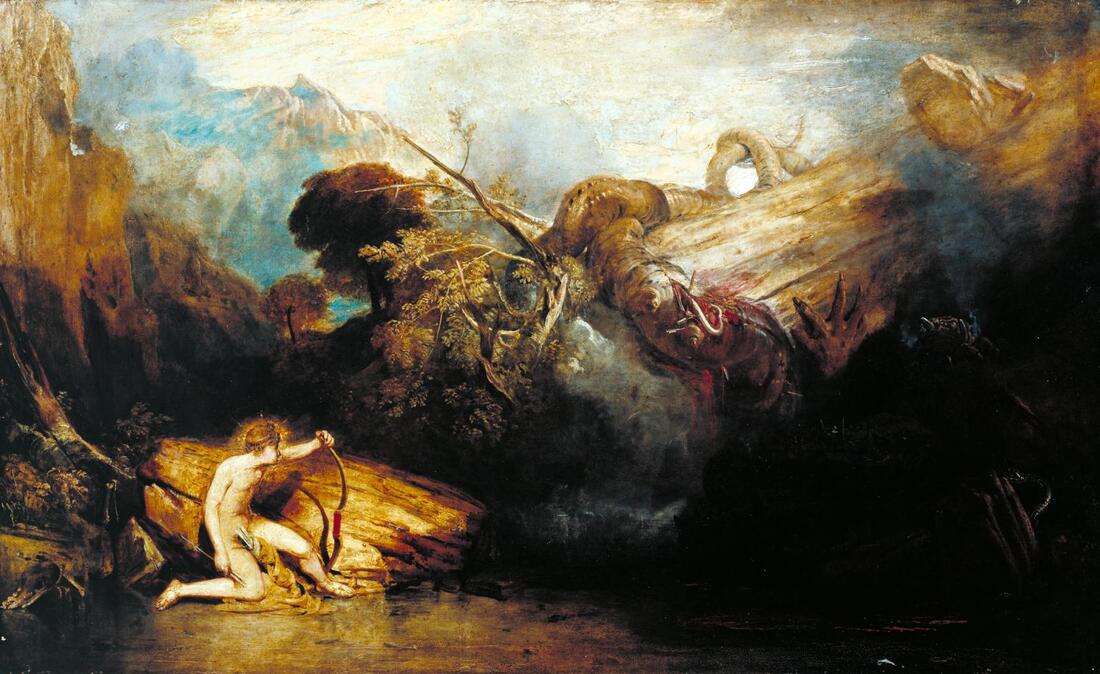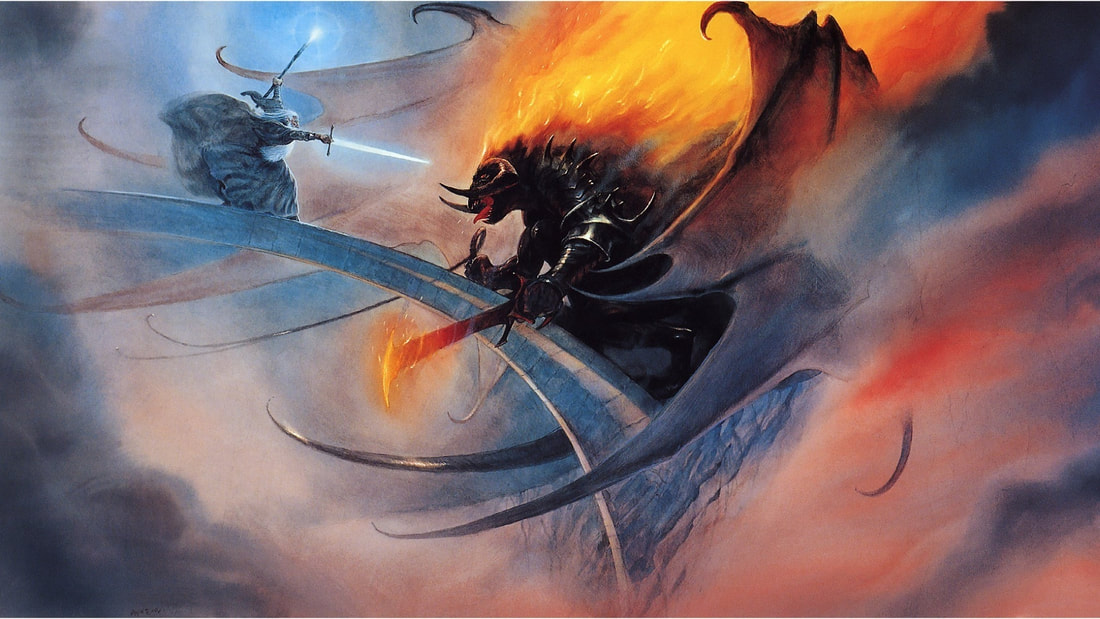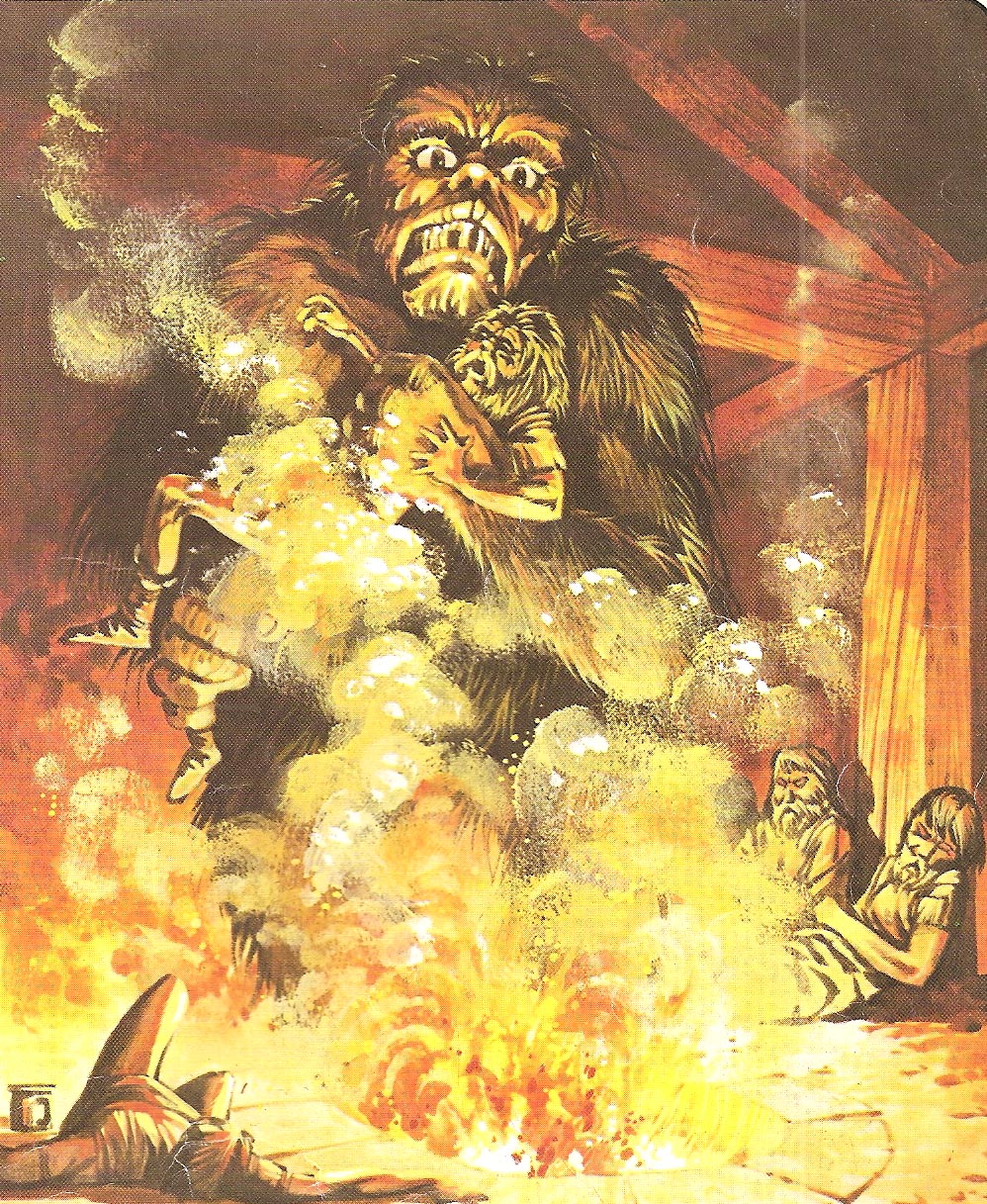|
I’ve always loved monsters. Scary or friendly, gigantic or tiny, ugly or beautiful, it doesn't matter - somehow monsters help make sense of the world. As a child, books such as The World of the Unknown: Monsters (a great primer for any child interested in monsters) and Mysteries, Monsters and Untold Secrets fed my fascination with supernatural and mythological creatures, a fascination that has stayed with me into adulthood. Monsters are a consistent element in my novels: the Tree of Life trilogy is peopled by a cast of monstrous beasts such as the giant Carnifex, the winged Kongamato and the dreaded Malign Sleeper, not to mention the Redeemers who haunt Elowen from the very start of the story. Likewise, dragons, the ogre-like Thyrs and the demon-dog Barghests threaten the heroes of my novel This Sacred Isle. Monsters appear in the stories of every culture on Earth – we have been plagued by werewolves, centaurs, trolls, ogres, sea monsters and many more. They can manifest our deepest fears –or our deepest wishes; who has not longed to see a fiery dragon racing across the sky? In many mythologies monsters symbolised functions and aspects of humanity or the natural world. Monsters filled unexplored lands – as humans looked at blank spaces on their maps, of the lands beyond their borders, their imaginations created a fantastical menagerie. For example, in medieval times travellers’ tales spoke of dog-headed men and creatures with neither neck nor head, but with a face set into the middle of their chests. There were Amazons, satyrs, mermaids, Manticores – all portrayed in medieval art and literature. The tradition portraying monsters in art continued – some powerful examples include Apollo and Python by J.M.W Turner, The Colossus by Francisco de Goya and the myriad of beings in The Garden of Earthly Delights by Hieronymus Bosch. And this has continued into our own times, with monsters regular features of our books, films, television and games. Monsters might frighten, amuse or entertain, but they remain a constant feature of our imaginations. In this post, I want to discuss three of my favourite monsters. Of course, choosing just three is very difficult but if I tried to write about all my favourite monsters, this post would be endless! Some honourable mentions must go to Dracula, Medusa, the Minotaur and of course Talos (the giant bronze automaton so brilliantly created for the film Jason and the Argonauts). Balrog - from The Lord of the Rings I’ve posted before about the influence J.R.R Tolkien has had upon my writing and how reading the Lord of the Rings for the first time had an enormous impact on me. Many strange beings – good and evil – populate Middle-earth, and one that always intrigued me most was the Balrog, who attacks the fellowship in the Mines of Moria in one of the most memorable scenes in the whole book. In the complex mythology of Middle-earth, Balrog were once Maia spirits who were corrupted by Melkor / Morgoth into his evil service. The Balrog who appears in The Fellowship of the Ring was buried deep underground, unearthed accidentally by the dwarves to haunt the dark halls of Khazad-dûm. Tolkien does not rush to reveal this terrible being – its presence is hinted long before its appearance. First the fellowship hears troubling sounds" ‘That was the sound of a hammer, or I have never heard one,’ said Gimli. ‘Yes,’ said Gandalf, ‘and I do not like it. It may have nothing to do with Peregrin’s foolish stone; but probably something has been disturbed that would have been better left quiet.’ And after their initial struggle with the Moria Orcs, Gandalf says: ‘Something dark as a cloud was blocking out all the light inside.’ All this tension would be wasted if the monster failed to match our fears, but here Tolkien succeeds. When the Balrog is finally seen, we truly see its strength, its horror. ‘Its streaming mane kindled, and blazed behind it. In its right hand was a blade like a stabbing tongue of fire; in its left it held a whip of many thongs.’ Tolkien tells us enough to inspire fear and awe, but leaves space for the reader to imagine the gruesome details of the Balrog – everyone who reads the Lord of the Rings is left with their own impression of this monster of fire and darkness. I feel it was telling that in the run-up of the release of Peter Jackson’s superb film adaptation of The Fellowship of the Ring, the appearance of the Balrog was one of the most discussed elements – fortunately, Jackson’s version did not disappoint (the heat haze when the Balrog roared was a stroke of genius), and was an undoubted highlight of the film, adding yet more awe and horror to Tolkien’s monstrous creation. Grendel from Beowulf Grendel appears in the great Anglo-Saxon epic poem Beowulf. Composed sometime between 680 and 800AD, it tells of the adventures of the Scandinavian hero Beowulf as he battles three terrifying supernatural enemies: the monster Grendel, Grendel’s mother and a mighty dragon. Beowulf comes to the aid of Hrothgar, King of the Skyldings in Denmark. Hrothgar’s great hall Heorot has been abandoned for twelve years, following attacks by the monster Grendel, who strikes at night, crushing warriors to pieces and dragging their corpses back to the marshy wilderness. Grendel is provoked by the sounds of feasting from Heorot: “Then the brutish demon who lived in darkness impatiently endured a time of frustration: day after day he heard the din of merry-making inside the hall, and the sound of the harp and the bard’s clear song.” Beowulf confronts Grendel, tearing off the monster’s right arm in a furious struggle – the mortally wounded Grendel flees, returning to his marshy home to die. After Beowulf faces and slays Grendel's avenging mother, he becomes King of the Geats and reigns for fifty years, until he dies defeating a dragon that ravages his kingdom. My first awareness of Grendel came as a child when reading The World of the Unknown: Monsters and I saw a vivid depiction of him – his anger, his rage, his madness. I first read Beowulf at school and have read different versions since – including Seamus Heaney’s wonderful translation – and always find new pleasure and meaning in the story. My novel This Sacred Isle was in no small part inspired by Beowulf and the hero’s battles with the three monsters, and I am sure there are countless interpretations of what the character of Grendel means, but for me, Grendel symbolises fear of the unknown, of the wild, one of the most primal of all human fears. We live in an increasingly urbanised and connected world, but the fear lingers that in the remaining wild spaces, monstrous horrors still lurk… The Pale Man from Pan's Labyrinth The Pale Man is a haunting, unsettling presence in Guillermo del Toro's masterpiece of fantasy cinema: Pan’s Labyrinth. The story takes place in Spain during the early Francoist period, five years after the bloody Spanish Civil War. Ofelia travels with her pregnant mother to live with her stepfather, Captain Vidal, who mercilessly hunts the Spanish Maquis who fight against the Francoist regime in the region. The narrative intertwines the brutal reality with a mythical underworld - Ofelia meets a faun who tells her she is the reincarnation of a lost princess of the underworld realm; the faun gives Ofelia a book and tells her she must complete three tasks to acquire immortality and return to her kingdom. During her second task, Ofelia encounters the Pale Man: a child-eating monster, he is a hideous, cadaverous figure with eyeballs in the palms of his hands. He sits alone and motionless at a lavish banquet, though the plates and bowls of food are untouched. Although Ofelia is warned not to eat anything there, she takes grapes, awakening the Pale Man. He chases Ofelia, but she manages – just - to escape his murderous clutches.
The cruelty of fascist Captain Vidal, the Francoist state and a complicit Catholic Church are all embodied within the Pale Man: like these oppressive powers, the Pale Man devours the young, endlessly, piteously, a nightmarish vision of madness and lust. Monsters often reflect our worst human excesses, and in doing so form a warning we would do well to heed. I believe the Pale Man is fascism stripped of all pretence and illusion, stripped of all the flags, the uniforms, the speeches, the propaganda – all that remains is cruelty and monstrosity. Which are your favourite monsters? Please leave a comment and join the conversation.
1 Comment
|
Archives
October 2023
Categories
All
|




 RSS Feed
RSS Feed